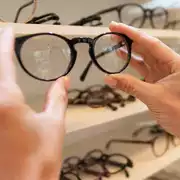What Happens In Cataracts
Cataract occurs when the natural clear lens in your eyes starts turning opaque and reduces the amount of light being transmitted to the back of the eyes. It is commonly observed in aging eyes over a period of time and in some cases it can happen rapidly due to injury or inflammation. The clouding of this clear lens causes the hazy and foggy vision that is seen in a patient with cataract.
You may experience a gradual drop in the quality of your vision as the Cataract progresses. This bad vision gradually impacts even your day to day routines and can make you feel frustrated. You may also miss out on enjoying your hobbies and pursuing your passions.
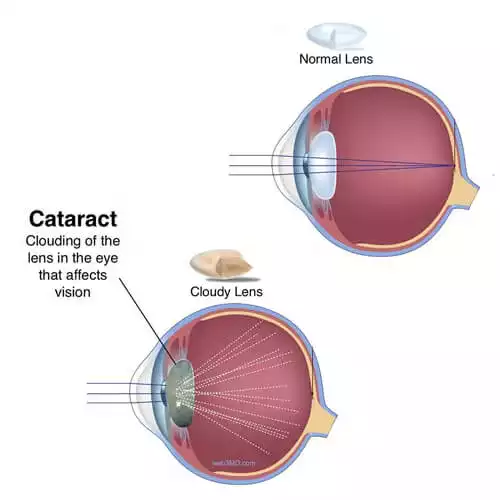
Did you know?
Symptoms
If you have Cataract, you may observe
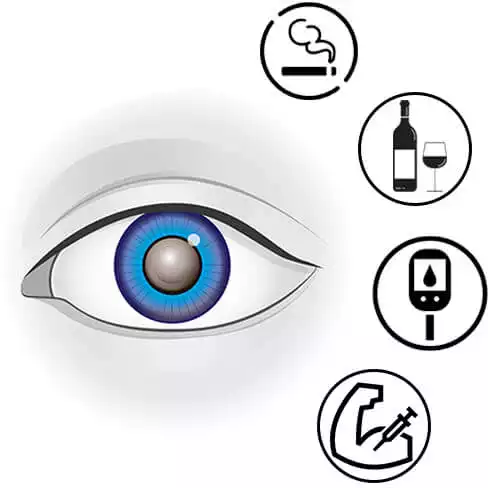
Causes Of Cataract
Age is one of the major contributors to the progress of Cataract in your eyes. Due to advancing age, the transparency of the clear lens starts to decrease gradually, slowly progressing to form a Cloudy Cataract.
Along with age, there are some other causes that act as an accelerator to the clouding of eyes. Check out these other causes influencing your clouded vision,
- Smoking
- Alcohol Consumption
- Diabetes
- Usage of certain medications such as steroids
Types of Cataracts
Nuclear Cataract
Nuclear Cataracts are Cataracts that primarily affect the inner core of the clear lens. These cataracts are commonly seen in advancing age. They cause a deterioration in the quality of vision such as bright colours appearing less vibrant or needing more light to see objects. These Cataracts also alter the refractive index of the clear lens which can sometimes improve the near vision in a patient.
This is called Second sight syndrome. However, this is a falsely re-assuring sign since patients prolong getting tested or treated since they can see very well even in advanced stages of the Cataract. These cataracts tend to be hard and must be dealt with at the earliest to ensure quick and optimal visual recovery.
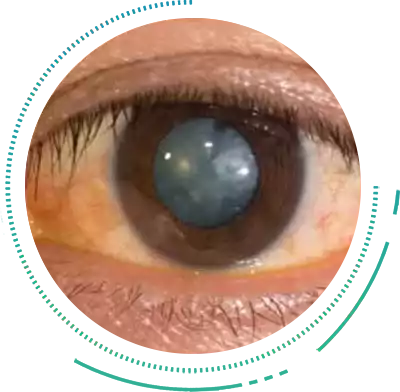
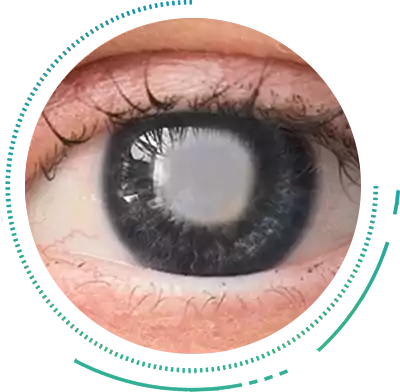
Cortical Cataract
Cortical Cataracts start off as spokes growing in from the corners of the clear lens. These spokes scatter the oncoming lights and can cause significant glare and difficulty in viewing bright objects. These Cataracts grow relatively faster and can fill the complete lens with a milky white opacity leading to a condition called "Mature Cataract".
These Cataracts can also liquify and leak into the surrounding structures causing pain, increased pressure and chances of permanent visual loss. They need to be dealt with at the earliest since end stage Cataract Eye Surgeries are associated with significantly higher complications.
Congenital Cataract
Congenital Cataracts are present from the time of birth and are usually caused due to many factors such as, infections in the mother during pregnancy, genetic factors, etc. Congenital Cataracts can cause significant and permanent loss of vision if left untreated, especially if it completely obscures vision. Since babies cannot communicate regarding the loss of vision, these Cataracts are often ignored and neglected and have severe implications.
Your child may have a Cataract if you notice the following Symptoms:- preference for using only one eye or crying when you close one eye
- A squint [deviation in the position of the eyes from its central point]
- A whitish opacity seen in the pupils
- Your child is unable to follow light or has difficulty in identifying nearby objects.
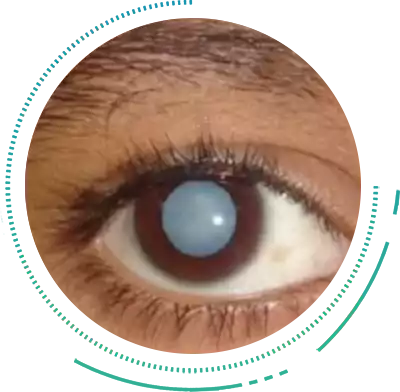

Posterior Subcapsular Cataract
Posterior Subcapsular Cataract affects the back part of our natural lens. Since this area of the lens is extremely sensitive to changes, even early Cataracts can cause significant Visual Symptoms. Most patients with Posterior Subcapsular Cataracts complain of glare and intolerance to bright lights and have difficulty driving at night.
A variety of Posterior Subcapsular Cataracts involve even the bag in which our natural lens lies in. These are known as Polar Cataracts. Since the vision disturbance is quite significant, patients would require early Cataract Surgery.
Cataract Eye Treatment Options
With the technological advancements and with increased experience of the cataract surgeon, Cataract Eye Surgery has now become easier and reachable to everyone. This one-time Cataract Treatment restores clear vision in a jiffy and is usually performed as a day care Eye Surgery. It is extremely safe under experienced hands to undergo Laser Cataract Eye Operation and the benefit of permanent lifelong vision is enjoyed by most patients.
Microincision Phacoemulsification Cataract Surgery(MICS)
Microincision Cataract Surgery is the most preferred method for modern day Cataract Surgery. It is an advancement of the gold-standard technique of Phacoemulsification Cataract Treatment. In this Eye Surgery, the Cataract Specialists uses only a tiny 2.2mm port through which the cataract is sucked out and a clear artificial foldable IOL is placed.
Patients experience extremely fast visual recovery after this Cataract Eye Treatment and are able to resume most of routine work by the very next day! This Eye Surgery is so advanced that it can be done with just the help of numbing drops without the need of painful injections! And since it is a very tiny microscopic port, no stitches or bandages are used at the end of the Cataract Operation.
At our Eye Hospital in Bangalore, Patients usually walk out after the Eye Surgery with just protective goggles and nothing else! MICS [Micro Incision Cataract Surgery] also minimizes postoperative Astigmatism and its effect on vision enabling patients to enjoy spectacle free vision after Eye Surgery.
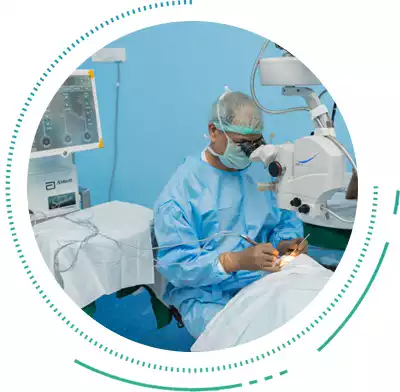
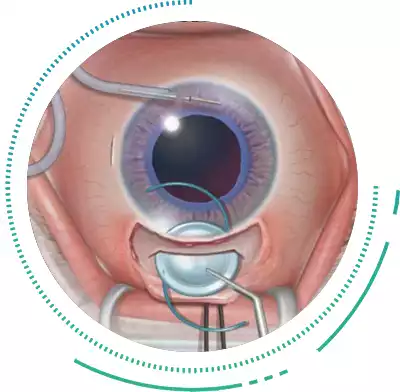
Extracapsular Cataract Surgery
Extracapsular Cataract Surgery is a conventional Eye Surgery for Laser Cataract Treatment which is slowly being replaced by Phacoemulsification and MICS. This Cataract Eye Treatment requires the creation of a large incision by the Cataract Surgeon, since the cataractous lens is removed whole without breaking it into smaller pieces.
A rigid artificial lens is then placed into the bag that initially contained the cataract. Since a large incision is being made by the Cataract Eye Surgeon in this type of Cataract Eye Surgery, numbing drops cannot be used for this procedure.
Usually local Anaesthesia injections are given to numb the pain for this Cataract Eye Operation. The large incision may also require sutures depending on the technique of Cataract Surgery performed. Although this Cataract Operation is Cost Effective, it needs a longer time for visual recovery and can cause higher amounts of post-operative Astigmatism as compared to Phacoemulsification Cataract Treatment or MICS Cataract Treatment.
Look Forward To Smart Cataract Surgery At Sri Eye Care, Bangalore
Sri Eye Care, Bangalore offers the most Advanced Treatment for Cataract Eye Problems in Bangalore and nearby regions. We strive to provide world class Cataract Treatment procedures for the best surgical outcomes.
Your Eyes Are Safe In Our Hands
Our Cataract Specialists come with over 40 years of surgical experience in state of the art Cataract Operation.

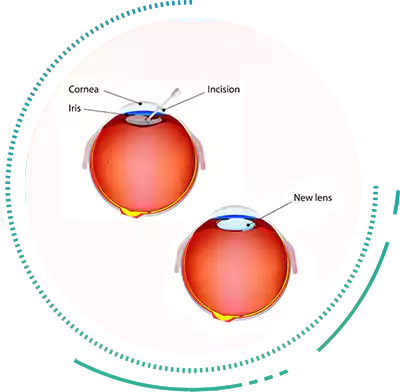
Surgical Options Focused on Your Complete Satisfaction
Choose our latest generation of Microincision Phacoemsulsification Surgery [MICS] Technology and experience faster visual recovery as compared to any other techniques of Cataract Treatment.
Technology our Core Competency
We keep pace with world class technological advancements in Laser Cataract Treatment to give the best outcome for every patient. The marvel of the OZIL® Technology for the Cataract Operation combined with an array of premium intraocular lenses ensure that our Advanced MICS Cataract Treatment delivers the best visual outcomes.
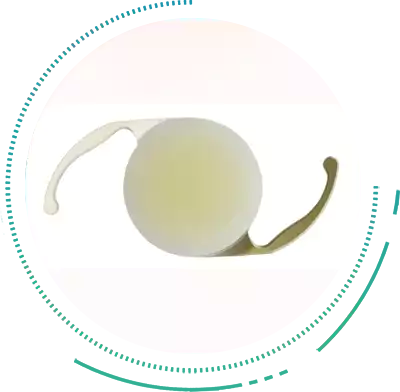
Frequently Asked Questions
What is a Cataract?
A Cataract is a cloudiness of the Eye's natural lens, which lies between the front and back areas of the eye, directly behind the pupil.
Are Cataracts found only in older people?
Most Cataracts develop slowly over time and affect people over age 50. About half of the Indian population has a Cataract by age 65, and nearly everyone over age 75 has at least a mild Cataract in one or both eyes.
In rare cases, infants can have Congenital Cataracts. These usually are related to the mother having Rubella, Chickenpox, or another infectious disease or nutritional deficiency during pregnacy; but sometimes they are inherited
How is a Cataract Removed?
A small port is made in the front surface of the eye. A circular hole is then cut in the front of the thin membrane (Anterior Capsule) that encloses the eye's natural lens. Typically the lens is then broken into smaller pieces with the Microphacoemulsification [MICS] system and is removed from the eye.
Once the entire lens is removed, it is replaced with a clear implant called an Intraocular Lens (IOL) to restore vision. With the Latest Technology, the eye heals quickly after Eye Surgery without stitches or bandages.
How is a Cataract detected?
The best way to detect a Cataract is through an Eye Exam. It is important to attend regular Eye Examinations, as many eye conditions cannot be detected otherwise. If you are experiencing changes in your vision, it is best to see your Eye Doctor right away.
How fast does a Cataract develop?
It depends on the person. For most people, Cataracts develop very slowly over a period of years. Cataracts in younger people tend to develop faster, as well as Cataracts in those with diabetes. For the first couple years, the changes may not be apparent, only a slight decline in vision.
Will spectacles be needed after the surgery?
The patients will often need after a Cataract Surgery to use spectacles for reading, writing and manipulating small objects. The surgery extracts the crystalline lens damaged by cataract but does not restore the accommodation (good vision far and near altogether) ability. At present however thanks to the developments in intraocular lenses there has been presented a possibility to reduce the spectacles dependence or even drop them at all.
The intricate design of a multifocal lens allows to simulate the natural crystalline lens operation. This sort of lens will have several “Focuses” each providing proper vision at a given distance range, both far and near. According to clinical research data around 85% of patients having had a multifocal lens implanted do not use spectacles or contact lenses ever.
Has one to be admitted to a hospital?
There is no need to stay overnight in the hospital. The surgery is performed as daycare procedure. It takes 10-12 minutes per eye. The patient goes home the same day, after the final check by the doctor for performing Cataract Eye Surgery in Bangalore.
What are the other modalities to Treat Cataract?
Although people with very early cataract can be managed easily with glasses, earliest possible cataract extraction is becoming more popular due to the increased safety and accuracy of the procedure. Also, since most Cataract Surgeries are machine based procedures, the softer the cataract is, the lesser energy is use to liquify the lens matter, and faster the healing time.
Will my Cataract Surgery be painful?
Most Cataract Surgeries performed at Sri Eye Care are done under Topical Anaesthesia. In simple terms, it means that drops are used to numb the eyes completely. So, the patient does not even feel anything.
What are the precautions after my cataract surgery? How many days of rest would I need?
After the surgical procedure, the patient rests in our cataract lounge for 15-20 minutes and is explained about the necessary medications and precautions. Usually, bandages are not used after the procedure to aid in faster visual recovery. Instead protective goggles are given.
We advise all our patients who have undergone the Cataract Procedure
- To use the protective goggles on for a period of 4 days indoors
- To avoid splashing water on their face and avoid wetting their hair for a period of 1 week
- To avoid exposure to dust, fumes and steam for a period of 1 week
- To resume TV watching, reading and near work within 24 hours of the cataract surgery
- Only with mulifocal and trifocal lenses
- Avoid swimming for a period of 6 weeks
Can Cataract be prevented from occurring by putting some drops or having some tablets or capsules
There is no drop or any tablet or capsule that can prevent cataract, yes a few drops ( Cinneria or drops containing Pottasium Iodide) claim to reduce cataract & prevent it from happening, they are not effective & most of the people who use it eventually develop cataract and have to undergo Cataract Surgery.




